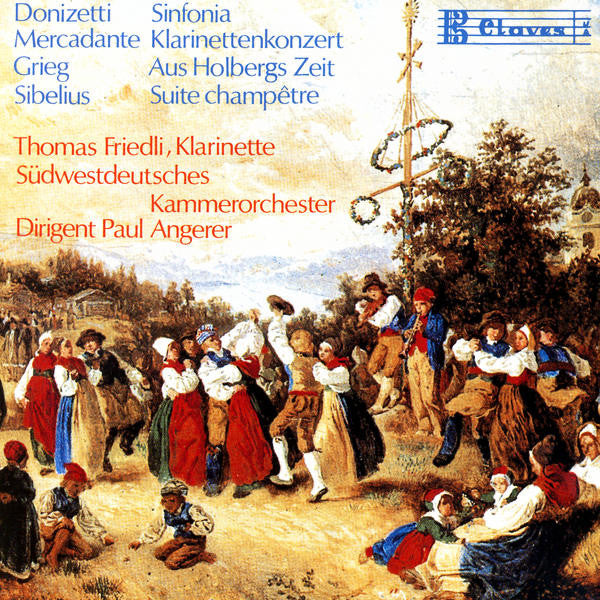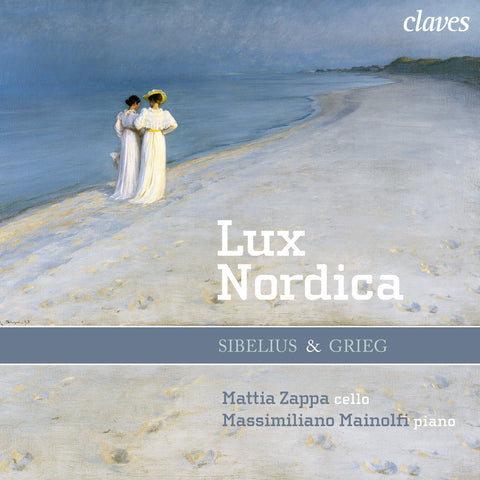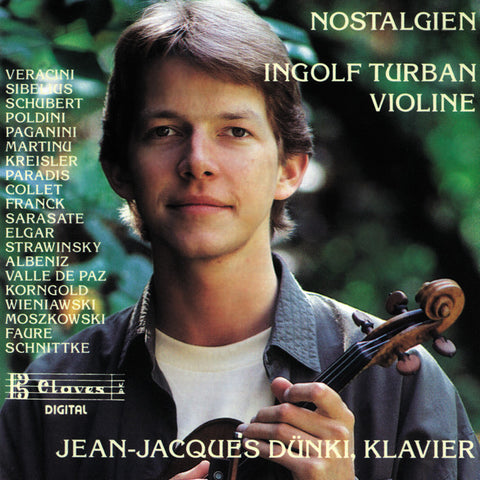(1989) Donizetti / Mercadante / Grieg / Sibelius
CD set: 1
Catalog N°:
CD 0709
Release: 1989
EAN/UPC: 7619931070926
- UPC: 829410479066
This album is now on repressing. Pre-order it at a special price now.
CHF 18.50
This album is no longer available on CD.
This album has not been released yet. Pre-order it from now.
CHF 18.50
This album is no longer available on CD.
This album is no longer available on CD.
VAT included for Switzerland & UE
Free shipping
This album is now on repressing. Pre-order it at a special price now.
CHF 18.50
This album is no longer available on CD.
This album has not been released yet.
Pre-order it at a special price now.
CHF 18.50
This album is no longer available on CD.
This album is no longer available on CD.
DONIZETTI / MERCADANTE / GRIEG / SIBELIUS
The works on this recording could be described as ‘theatrical music’ or could be given a title such as ‘Music for Theater’ – they are the setting for vivid life and activity, serious but not solemn, merry but not wild, comedy and intrigue (with perhaps occasional moments of hypocrisy).
The Sinfonia by Gaetano Donizetti: Instrumental music by one of the most famous Italian opera composers, not actually written for the theater, but filled with spirit of such comical stage figures as Dulcamara, Nemorino, Don Pasquale or Malatesta. The first movement could be the overture, describing a muggy afternoon in Italy; a storm breaks and Rossini’s Don Basilio appears with his drenched hat… then the many sighs of the shy lover’s aria; the chorus breaks in with its commentary; drummers appear on stage and then exit; the curtain slowly falls… the presto is filled with merriment and dance, country folk, farmers, brides; two lovers, depicted by the violin and the cello.. and the finale brings the turbulent resolution of the many complications; doubts still linger, as must be in a truly intriguing opera, but the happy ending is convincingly asserted in D major.
And then, as if the encore in a concert, the Clarinet Concerto in B-flat by Saverio Mercadante, at his time one of Italy’s leading opera composers, along with Donizetti, Bellini and Verdi. Unfortunately his works have fallen into disregard. This work, like the preceding, is filled with the spirit of the theater, and as an ‘encore’ it is a showpiece for the soloists. It is a coloratura aria in two parts. The lively merriment of the Allegro maestoso is followed by an Andante with five variations, a sort of belcanto with improvised ornamentation, coloraturas and cadential extensions.
A homage to the author of many comedies became a ‘Neo-Baroque Suite’: the Norwegian Edvard Grieg pays tribute to the Dane Holberg; music in memory of a stage writer by a composer who earned his first recognition with a work for stage – Peer Gynt… the suite contains a particularly beautiful movement, the Prelude; the Air is also of exceptional depth and beauty, and the work as a whole breathes of Norwegian folklore. Grieg himself said: ‘I have often used my country’s folk music. I have remained a German romantic from the Schumann school with respect to style and form, but I have at the same time drawn from the treasure of Norwegian folk songs and have tried to create a national art from the unexplored manifestation of the Northern folk soul.’
The ‘Suite champêtre’ by Jean Sibelius, a country suite, also alludes to the theater, especially with the movements like the ‘Pièce caractéristique’ and its ‘Mélodie élégiaque’. The conductor took advantage of his rights as a ‘director’ with this work; during the ‘staging’ he found the movement ‘Dance’ to be more like a Finnish dance. So the titles were left as given, but the order of the music was changed. We leave the rest to Sibelius, who said: ‘I am not a literary musician; for me music begins where words end.’
(1989) Donizetti / Mercadante / Grieg / Sibelius - CD 0709
The works on this recording could be described as ‘theatrical music’ or could be given a title such as ‘Music for Theater’ – they are the setting for vivid life and activity, serious but not solemn, merry but not wild, comedy and intrigue (with perhaps occasional moments of hypocrisy).
The Sinfonia by Gaetano Donizetti: Instrumental music by one of the most famous Italian opera composers, not actually written for the theater, but filled with spirit of such comical stage figures as Dulcamara, Nemorino, Don Pasquale or Malatesta. The first movement could be the overture, describing a muggy afternoon in Italy; a storm breaks and Rossini’s Don Basilio appears with his drenched hat… then the many sighs of the shy lover’s aria; the chorus breaks in with its commentary; drummers appear on stage and then exit; the curtain slowly falls… the presto is filled with merriment and dance, country folk, farmers, brides; two lovers, depicted by the violin and the cello.. and the finale brings the turbulent resolution of the many complications; doubts still linger, as must be in a truly intriguing opera, but the happy ending is convincingly asserted in D major.
And then, as if the encore in a concert, the Clarinet Concerto in B-flat by Saverio Mercadante, at his time one of Italy’s leading opera composers, along with Donizetti, Bellini and Verdi. Unfortunately his works have fallen into disregard. This work, like the preceding, is filled with the spirit of the theater, and as an ‘encore’ it is a showpiece for the soloists. It is a coloratura aria in two parts. The lively merriment of the Allegro maestoso is followed by an Andante with five variations, a sort of belcanto with improvised ornamentation, coloraturas and cadential extensions.
A homage to the author of many comedies became a ‘Neo-Baroque Suite’: the Norwegian Edvard Grieg pays tribute to the Dane Holberg; music in memory of a stage writer by a composer who earned his first recognition with a work for stage – Peer Gynt… the suite contains a particularly beautiful movement, the Prelude; the Air is also of exceptional depth and beauty, and the work as a whole breathes of Norwegian folklore. Grieg himself said: ‘I have often used my country’s folk music. I have remained a German romantic from the Schumann school with respect to style and form, but I have at the same time drawn from the treasure of Norwegian folk songs and have tried to create a national art from the unexplored manifestation of the Northern folk soul.’
The ‘Suite champêtre’ by Jean Sibelius, a country suite, also alludes to the theater, especially with the movements like the ‘Pièce caractéristique’ and its ‘Mélodie élégiaque’. The conductor took advantage of his rights as a ‘director’ with this work; during the ‘staging’ he found the movement ‘Dance’ to be more like a Finnish dance. So the titles were left as given, but the order of the music was changed. We leave the rest to Sibelius, who said: ‘I am not a literary musician; for me music begins where words end.’
Return to the album | Main Artist: Thomas Friedli



















